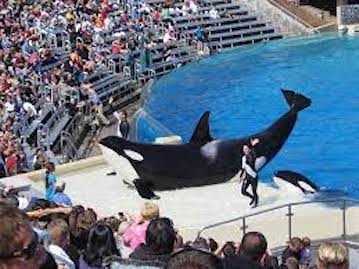The 2013 documentary Blackfish revealed SeaWorld’s lies to a broad audience. Its most immediate effects were to SeaWorld’s attendance and stock price. It would later contribute to a corporate decision to end its orca breeding program. Over the longer term the ‘Blackfish Effect’ has been long-lasting, and will hopefully pave the way for other marine parks to stop their cetacean breeding programs, and hopefully to retire their whales and dolphins into newly built sanctuaries.
The film’s central focus was an orca named Tilikum who’d earned notoriety after he’d killed one of his trainers in 2010. Built upon numerous interviews with former marine mammal trainers, the documentary started with a focus on the dangers these employees face when working with the ocean’s top predator. But it ended up being about much more than that. As a number of serious animal welfare issues emerge, the viewer can’t miss the fact that for the whales themselves, life in captivity means stress, boredom, despair, and thus a much greater likelihood of behaving in a manner that wouldn’t take place in the wild.
The reality is that for a whale or dolphin a life in captivity is a living hell.
So how did the industry respond? The decision to end captive breeding had to be a painful one, as it effectively made their 20+ remaining orcas the last to be held in their US parks. With live-captures no longer being a viable alternative (due to public sentiment and, in some cases, prohibitive laws), there is simply no other way to replenish ‘inventories’. But SeaWorld and others in the industry have adapted their business models and PR campaigns to reflect an organization based on public education and conservation. Whether this is simply another example of ‘greenwashing’, I’ll let you decide for yourself.
So why was this particular film so impactful? The industry has faced harsh public scrutiny many times before and since. One could argue that scenes depicted in The Cove or any documentary on the Faroe Islands reveal images even more shocking, violent and cruel. Yet Blackfish managed to capture the public’s imagination and attention in an especially visceral way. It so dramatically changed how people felt about marine mammal captivity that the usual, gradual change we’ve seen over many years became a tide of negative publicity. This time, SeaWorld experienced a fall in attendance at its parks, and in its market value, which was both immediate and significant. Why?
It certainly helped that Blackfish was broadcast by major distribution channels like CNN and Netflix, which undoubtedly helped it reach a much bigger audience. But media research has suggested that the timing of its release also was a factor. By 2013 animal welfare activism had become well established in our cultural climate. The public had by then become much more receptive to the message than it would have been ten or twenty years prior. Then to compound SeaWorld’s problems, when they dismissed the documentary as being without a factual basis, their credibility with the public quickly eroded. Their response to concerns about their own employees’ safety was also seen as slow and entirely lacking.
The bigger lesson is that such investigative journalism can have tremendous potential to act as an agent of change. Marine parks desperately need to control the narrative. In fact, their very existence depends on it. When they lose that, it means a significant threat to their bottom line. In the long-run, perhaps even an existential threat. The reason? Because a film like Blackfish is one more piece of evidence that cetaceans belong in the wild.
When it comes to raising public awareness though, we’ll need to keep at it for a long time to come. Sadly, there are still more than 3,600 whales and dolphins being held in captivity around the world. That’s a great deal of injustice and lack of compassion by our species directed towards others. Keep in mind that the largest captive facilities we have to keep them in are about 200,000 times smaller than a dolphin’s natural range.
We need to persevere and keep the momentum generated by Blackfish and others to keep pushing major travel brands to drop ticket sales to captive facilities, to urge the continued development of sanctuaries, and to pressure governments to ban cetacean captivity altogether. If we follow the science, and if we consider what a life in captivity is truly like for such a being, there can be no other conclusion.
Fortunately, we’re making progress. Laws which either ban or significantly limit the display of captive marine mammals are already in place in Australia’s New South Wales, Canada, Chile, Costa Rica, France, India, Luxembourg, Norway, and Switzerland (not to mention in some local jurisdictions like San Francisco and Mexico City). Now, we are extremely hopeful that we’ll one day see the passage of legislation recently introduced in the United States which would end captivity nationwide. This would be a huge win, in that the USA has the third highest number of captive cetaceans in the world (after only China and Japan).
The US-based Nonhuman Rights Project (NhRP) is an organization doing exceptional work towards securing legal rights for nonhuman animals in that country. The new SWIMS Act (“Strengthening Welfare in Marine Settings Act of 2022”) is largely a product of their efforts, and looks to end the capture and breeding of whales and dolphins for public display. Importing or exporting species such as orcas, belugas, pilot whales and others would also be banned, unless the animal is being transported to a sanctuary or released back into the wild.
Best of all, the bill references scientific evidence we already have for the “cognitive, emotional, and social complexity of whales [and dolphins]”. It builds the case for these species having legally recognized autonomy as individuals. This is precisely the right direction for us to go. This act would be a big step forward, and we look forward to what we hope will be it’s eventual passage, with much anticipation.
For The Orca’s Voice,
Dani, Canadian Cetacean Alliance



Leave a Reply